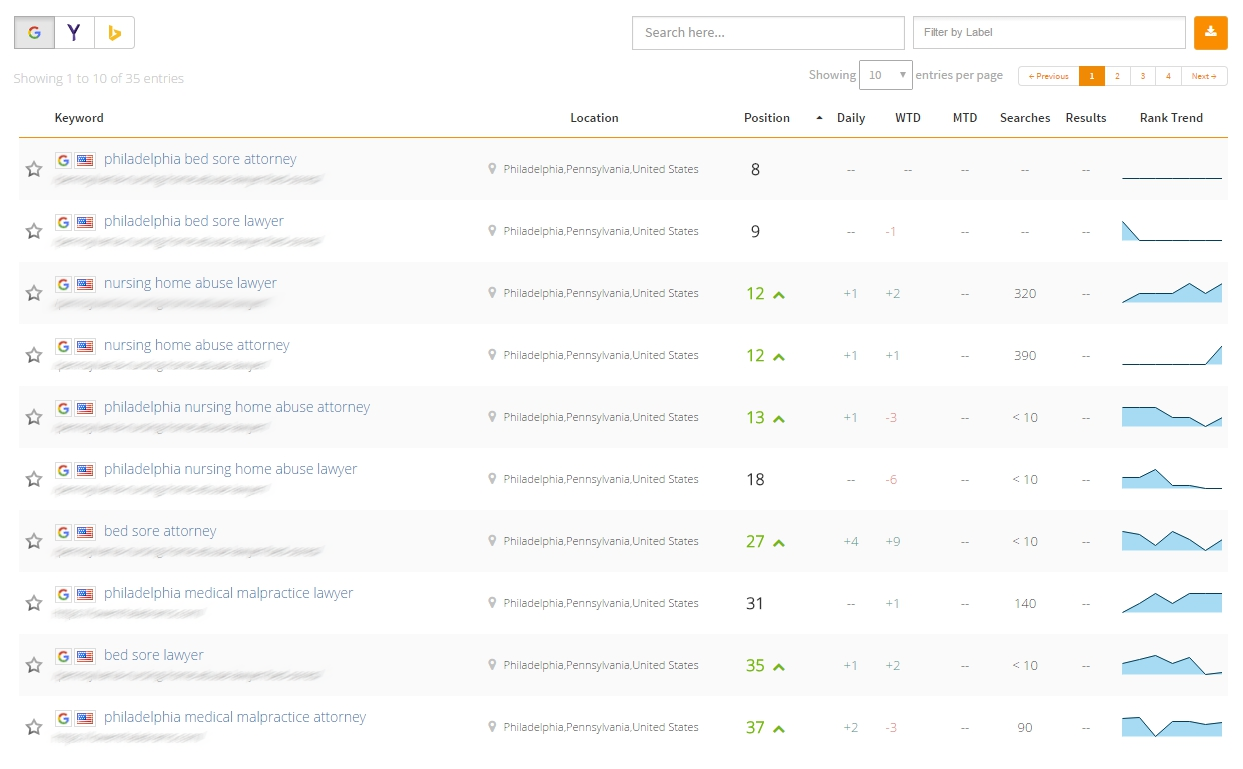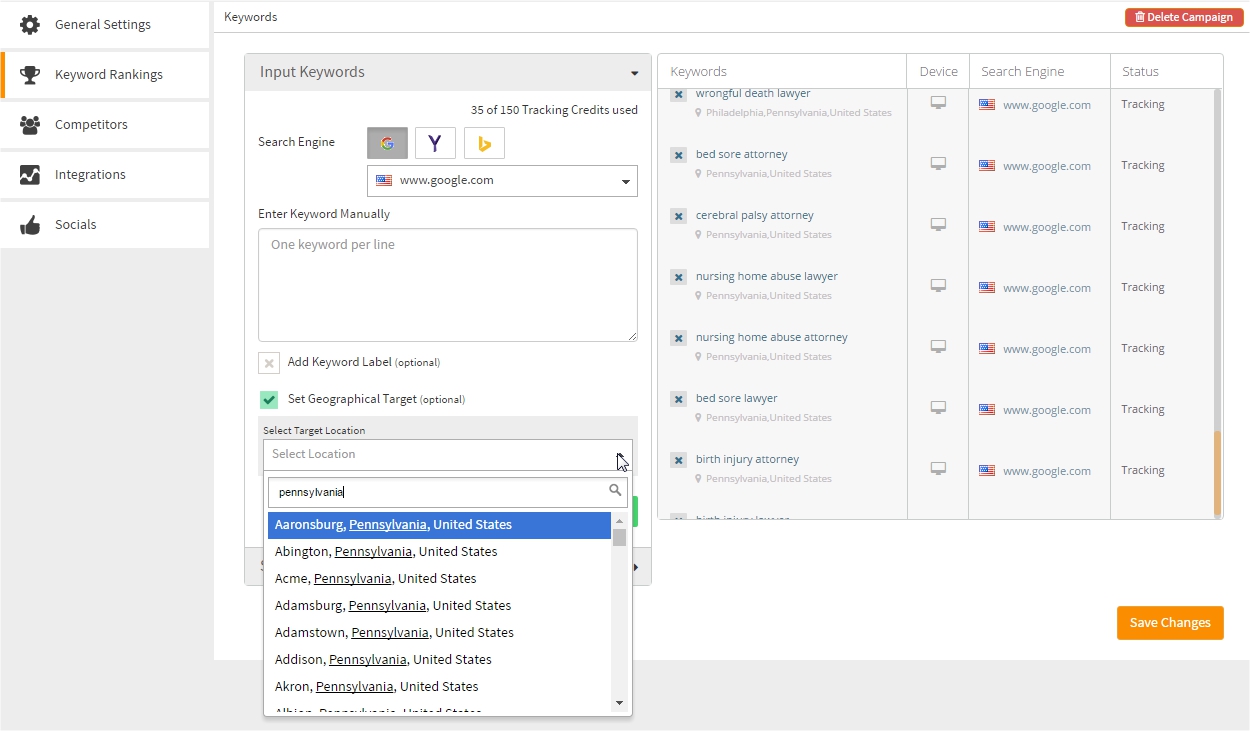
- The Importance Of Rank Tracking Local Keywords In 2018 - June 5, 2018
- How to Spot Opportunities from your Competitors’ Backlinks - July 19, 2017
- Why You Should Monitor Your Brand Daily - May 26, 2017
Optimizing for optimal website performance is not just about getting all the elements to work together. In today’s digital landscape, relevance is a key aspect that website owners cannot underestimate. With algorithmic updates geared towards contextual search and enhanced user experience, keeping your website relevant to the interests of your target audience should be the starting point of your campaigns.
In this case, geo-targeting is one of your touch points. Why do you need to geo-target your website? It’s simple—online users are more responsive when looking for local information. Geo-locations play a big role in buying decisions, as audience find this type of information relevant to their queries.
Here are some of the ways you can supercharge your website rankings through geo-targeted campaigns:
Audience Characteristics Provide a Better Take on Things
 There are two ways to look at your audience: psychographics and demographics. Both are just as important to gauging your website’s performance on the search engine results pages.
There are two ways to look at your audience: psychographics and demographics. Both are just as important to gauging your website’s performance on the search engine results pages.
In psychographics, your focus lies on the attitude and interests of your target audience. This highlights the need to align your website strategies to the preferences of your market. While some digital experts say psychographics can be hard to translate to actionable insights, this allows you to create a message that draws the attention of your target audience. In essence, psychographics is about building the image you want your target audience to perceive.
Demographics, on the other hand, provide an objective criterion, such as age, gender, and ethnicity. This makes it easier to discern the groups of users who are responding to your message and visiting your site. With demographic data, you can isolate your niche and get the metrics for enhanced website performance.
By combining psychographic and demographic data, you can tap into new site capabilities. By looking at your audience’s characteristics, you can answer these questions:
- What prompted users to click on your site?
- What message appealed to them the most?
- Where are most of your site visitors coming from?
The Language Barrier Has to Go
 How do you communicate with your target audience if they can’t understand what you’re trying to get across? Language barrier is one of the roadblocks of website owners who are targeting audiences from different geographical locations.
How do you communicate with your target audience if they can’t understand what you’re trying to get across? Language barrier is one of the roadblocks of website owners who are targeting audiences from different geographical locations.
Using the right language is not just about setting the appropriate voice and tone for your website content, though. You should also look into the phrases and words that your target audience is using. For example, the general understanding for “boot” may be footwear, but this can mean differently if your audience comes from the UK. For the British, “boot” may mean the trunk of a car.
By breaching the language barrier, you can develop better verbiage for your website content. The best way to get past the language difference is by monitoring social media conversations. This will not only help you uncover new angles for your content, but also allow you to engage with your target audience directly.
Your Keywords are Your Arsenal
Once you’ve gathered enough data about your target audience, you need to start developing your keyword list. Your keywords should include the top locations where most of your visitors are coming from. You can also check your keywords rankings to see which terms drive the most traffic. Some advise using keywords on geographic areas that have high search volume but low competition.

Keyword list including location, position, search traffic and trends

Setting Geographical Target Location
After compiling the geo-targeted keywords that you want to rank for, classify them into three categories:
- Informational: Used for broader topics
- Commercial: Used for specific products
- Transactional: Used for specific products that address the user’s intent to buy
Leverage Your Keywords with Unique Content
The challenging part of geo-targeting is creating content that appeals to your target audience. If you fail in your content strategy, visitors may turn away from your site and deem it irrelevant to what they’re looking for. How do you go about geo-targeted content?
The answer is uniqueness. You can’t have two pages saying the same thing if you’re targeting different locations. What works for a search user in New York might not work for someone who is from Miami. You need to create a unique page for every geo-targeted keyword.
Your content strategy will also depend whether you plan to go multi-lingual or multi-regional. If you’re going for both, you need to have a two-pronged strategy that will not compromise the quality of your content and your site’s performance.
Geo-targeted campaigns open new doors for better search visibility and higher conversions. These provide you with a concentrated view of your market, especially if you’re starting locally and planning to venture to a wider audience later on.
Need data on your Geo Locations? Our streamlined tool will show you the metrics that matter to your campaigns. Join Siteoscope and get accurate reports on your website performance.
